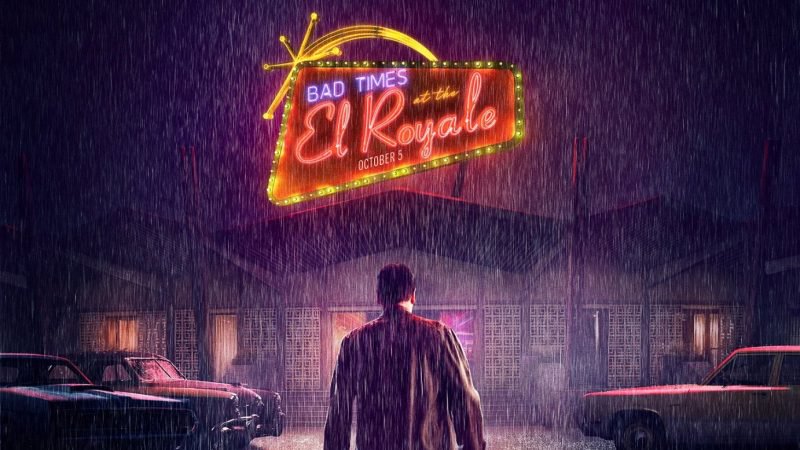Bad Times at the El Royale follows a group of strangers who arrive at the El Royale Hotel, a casino-motel near Lake Tahoe straddling the California-Nevada border, to take advantage of favourable regulations in each state. Unfortunately, the El Royale has fallen on hard times, having lost most of their customers, all but one staff member, and their gambling licence. Despite this, there will be gambling going on, with very high stakes. Each person at the El Royale has hidden depths and secrets, and nobody is who they appear to be. The colourful cast of characters interact and make choices that have consequences that decide who will leave the El Royale alive, and who will not.
Set in the late-1960s, the film has a rich and deep atmosphere rooted in a particular time and place. The El Royale is a character itself, and it too has dark secrets and a deceiving façade.
The actors give good performances in this film. Special mention goes to Jeff Bridges, who plays a Catholic priest named Daniel Flynn. Chris Hemsworth portrays a character who is equal parts alluring and creepy, and despite not getting as much screen time as the other major characters, plays a central role in the film’s climax. Perhaps most noteworthy, however, is actress Cynthia Erivo, who plays singer Darlene Sweet. Erivo’s singing is one of the highlights of the film, both adding to the movie’s aesthetic appeal (some instances more than others), as well as serving an important role in the plot.
Music is an important component in Bad Times. The film features a distinctive soundtrack incorporating songs from the era in which the movie is set: some familiar, some less so, most of which we are introduced to via the character of Darlene.
Camera angles are also used effectively to add to the tension and atmosphere. The opening sequence features an interesting use of the fourth wall, having the character face the camera and act as if using a mirror on the unseen fourth wall. No mere gimmick, this has significance that will become clear later. Use of close-ups, and alternately revealing and concealing characters add to the suspense, making it hard to tell how and when the characters will react in volatile situations.
The pacing in Bad Times is unusual. Instead of the revelations mostly coming at the climax, with only subtle hints and clues beforehand, it doesn’t take long before major secrets start being revealed, one after the other in a breathless procession. Each reveal raises further questions, not all of which are answered with certainty by the end. There are twists and turns, some predictable, some not, but I find that one of the former is often quickly followed and subverted by the latter.
I have heard Bad Times being touted as an example of a modern take on the Western genre. However, it doesn’t really evoke the same feeling the way the TV show Breaking Bad does, which I would consider a prime example of a contemporary Western. Personally, I think Bad Times has more in common with the film noir genre. Although there is a climactic shoot-out, overall it feels more like a whodunnit with its emphasis on mystery and secrets. The style of Bad Times is reminiscent of Quentin Tarantino’s work, with a distinctive visual and auditory style, and long stretches of mounting tension punctuated by relatively brief bursts of intense violence. However, director Drew Goddard (director of Cabin in the Woods, and writer of Cloverfield and The Martian) approaches his subject in a manner uniquely his own.
Bad Times at the El Royale is an exciting thriller that never lets up and is well worth seeing. Having experienced this film, I look forward to other entries in Johnson’s and Goddard’s careers.


